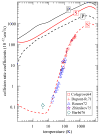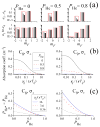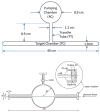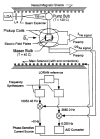Optically polarized 3He
- PMID: 29503479
- PMCID: PMC5830183
- DOI: 10.1103/RevModPhys.89.045004
Optically polarized 3He
Abstract
This article reviews the physics and technology of producing large quantities of highly spin-polarized 3He nuclei using spin-exchange (SEOP) and metastability-exchange (MEOP) optical pumping. Both technical developments and deeper understanding of the physical processes involved have led to substantial improvements in the capabilities of both methods. For SEOP, the use of spectrally narrowed lasers and K-Rb mixtures has substantially increased the achievable polarization and polarizing rate. For MEOP nearly lossless compression allows for rapid production of polarized 3He and operation in high magnetic fields has likewise significantly increased the pressure at which this method can be performed, and revealed new phenomena. Both methods have benefitted from development of storage methods that allow for spin-relaxation times of hundreds of hours, and specialized precision methods for polarimetry. SEOP and MEOP are now widely applied for spin-polarized targets, neutron spin filters, magnetic resonance imaging, and precision measurements.
Figures

















 ), Cracow (▼), and Paris (all other symbols; the small and large squares stand for weak and strong discharges in the same cell).
), Cracow (▼), and Paris (all other symbols; the small and large squares stand for weak and strong discharges in the same cell).
 ), Mainz (
), Mainz (
 ), Cracow (
), Cracow (
 ,
,
 ), and Paris (all other symbols). Wide and narrow cells (w, n): see Fig. 17.
), and Paris (all other symbols). Wide and narrow cells (w, n): see Fig. 17.






References
-
- Abboud M, Sinatra A, Tastevin G, Nacher PJ, Maitre X. Metastability exchange optical pumping of helium-3 at high pressures and 1.5 T: Comparison of two optical pumping transitions. Laser Physics. 2005;15(4):475–479.
-
- Abboud Marie. Pompage optique de l’hélium-3 à forte pression dans un champ magnétique de 1.5 Tesla. PhD Thesis. 2005 http://tel.archives-ouvertes.fr/tel-00011099 (UPMC - Paris 6)
-
- Abboud Marie, Sinatra Alice, Maître Xavier, Tastevin Genevieve, Nacher P-J. High nuclear polarization of 3He at low and high pressure by metastability exchange optical pumping at 1.5 Tesla. Europhys Lett. 2004;68(4):480.
-
- Abe K, Akagi T, Anderson BD, Anthony PL, Arnold RG, Averett T, Band HR, Berisso CM, Bogorad P, Borel H, et al. Measurement of the neutron spin structure function and asymmetry . Phys Lett B. 1997a;404(3):377–382.
-
- Abe K, Akagi T, Anderson BD, Anthony PL, Arnold RG, Averett T, Band HR, Berisso CM, Bogorad P, Borel H, et al. Precision Determination of the Neutron Spin Structure Function . Phys Rev Lett. 1997b;79(1):26.
Grants and funding
LinkOut - more resources
Full Text Sources
Other Literature Sources
